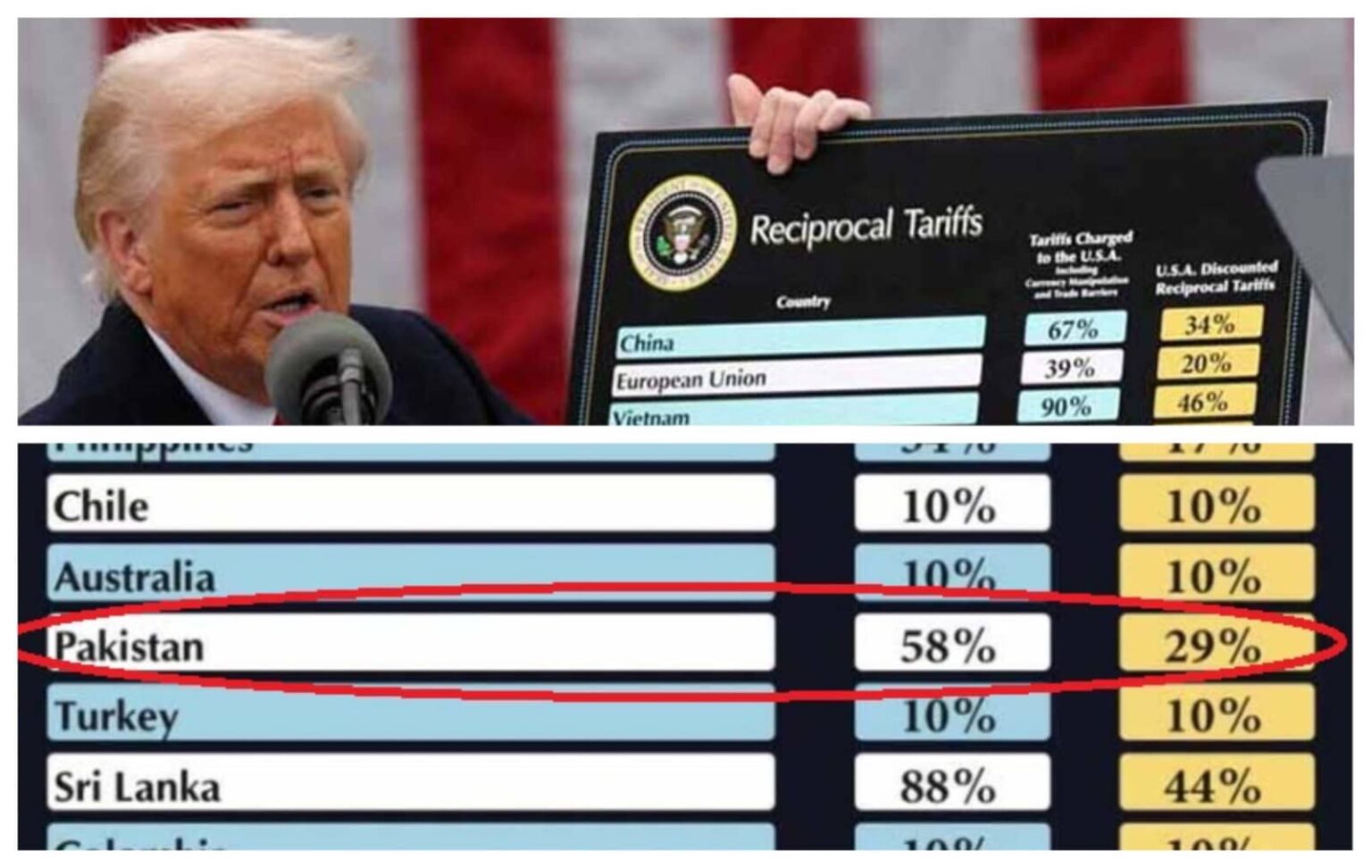Islamabad, April 03: US President Donald Trump has launched a global trade war, announcing sweeping reciprocal tariffs on over 180 countries, with Pakistan among the most affected.
The South Asian nation now faces a 29% tariff on its exports to the US, potentially eroding its competitive edge in the American market.
Impact on Pakistan’s Trade
The US remains one of Pakistan’s largest trading partners, accounting for 19% of the country’s total exports.
Of the $3.6 billion in goods exported to the US in the first seven months of FY2025, 79% consisted of textile and apparel products—an industry that could be hit the hardest by the new tariffs.
Economic analysts warn that the higher costs could reduce US consumer demand for Pakistani products, leading to a decline in exports.
Mustafa Pasha, Chief Investment Officer at Lakson Investments, emphasized that Pakistan must now strategize its position relative to competing countries like China, Vietnam, and Bangladesh.
However, Pakistan may still retain a cost advantage over some regional competitors.
According to Musadaq Zulqarnain, CEO of Interloop Textiles, Pakistan’s tariff burden is lower than Bangladesh (37%), Vietnam (47%), and Cambodia (49%), providing an opportunity to capture market share from these countries.
Comparative Disadvantages
While Pakistan has an advantage over some rivals, it also faces a disadvantage against key competitors. The 29% tariff is higher than India’s 26% and significantly higher than Turkey’s 10%.
Other countries such as Jordan, Egypt, and Central American nations face tariffs of 20%, making them relatively more attractive trade partners for US buyers.
Possible Strategies for Pakistan
-
Negotiations: Pakistan must push for better trade terms with the US, potentially offering concessions in sectors where US imports are minimal.
-
Reducing Costs: Lowering energy and production costs could help Pakistani exporters remain competitive despite the tariff hike.
-
Market Diversification: Exploring alternative markets in Europe, the Middle East, and Africa could help offset losses in the US market.
Global Trade Shake-Up
Trump’s tariff regime aims to rebalance US trade deficits by imposing levies based on trade imbalances.
China, the biggest target, faces a 54% total tariff, while key US allies like Japan (24%), South Korea (25%), and the EU (20%) are also hit hard.
The impact on Pakistan will depend on how well it adapts to these changes, negotiates exemptions, and shifts its trade focus in response to the new global trade landscape.
